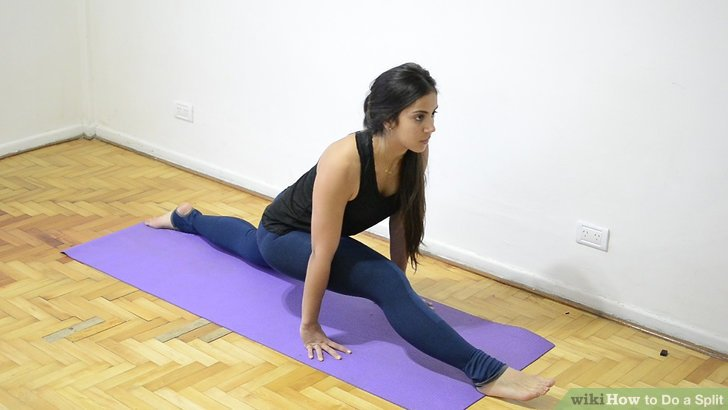The ability to do the splits often looks like an advanced skill reserved for dancers, gymnasts, and yoga enthusiasts, but anyone can learn it with consistent practice and patience. Achieving a full split requires dedication, body awareness, and the right approach to flexibility training. It’s not about forcing your body into position but about gradually teaching your muscles to lengthen and adapt safely over time.

Understanding What a Split Is
A split is a flexibility position where the legs extend in opposite directions, forming a straight line across the floor. There are different forms of splits, most commonly the front split and the middle split. The front split involves extending one leg forward and the other backward, while the middle split requires spreading both legs sideways until they are aligned with the hips. Each type targets different muscle groups, but both demand flexibility in the hamstrings, hip flexors, quadriceps, and inner thighs.
Why Learning the Split Is Beneficial
Training for splits isn’t just about aesthetics or performing impressive poses. It brings numerous benefits to your overall health and physical performance. Flexibility training improves joint mobility, posture, and circulation. It helps relieve muscle tension, especially for those who sit for long hours or perform repetitive movements. Learning to do the splits also strengthens your mental discipline, as it requires persistence, patience, and consistent effort. Over time, it enhances balance, body awareness, and muscular control.
Preparing the Body
Before attempting deep stretches, your muscles must be warm and supple. Stretching cold muscles can lead to injury or strain. Begin your practice with a light warm-up that increases your heart rate and blood flow. Simple movements such as jogging in place, jumping jacks, or gentle leg swings can prepare the body effectively. Dynamic movements like lunges with torso twists or side steps also help loosen the hips and activate the core. A warm body responds better to stretching and allows you to reach deeper positions safely.
Building Flexibility Gradually
Learning how to do a split is a process that depends on developing flexibility in specific areas of the body. The hamstrings, hip flexors, quadriceps, glutes, and inner thighs are the main focus. Begin with stretches that lengthen these muscles and gradually increase intensity as you improve.
A seated forward fold is one of the most effective hamstring stretches. Sit on the floor with your legs straight ahead, reach toward your toes, and keep your spine long. Breathe deeply and relax into the stretch.
For the hip flexors, a low lunge stretch works wonders. Place one leg in front with the knee bent and the other leg extended behind you, resting your knee on the ground. Gently push your hips forward and keep your chest lifted.
The butterfly stretch targets the inner thighs. Sit upright with the soles of your feet together and allow your knees to fall outward. Hold your ankles and lean forward slightly, keeping your back straight.
The pigeon pose is another excellent hip-opening stretch. Bring one knee forward and extend the opposite leg straight behind you. Keep your hips square and lean forward slowly for a deeper stretch.
For the middle split, the side straddle stretch helps open the inner thighs. Sit with your legs wide apart and reach toward one side, then switch to the other. Always move with control and never force your range of motion.
Progressing Toward the Split
Once your flexibility improves, begin practicing split progressions. Start in a comfortable lunge or wide stance and ease your way into the split position slowly. Keep your hips squared and your upper body aligned. Support yourself with yoga blocks, pillows, or folded towels under your thighs to reduce pressure on your muscles and joints.
Lower yourself gently into the position only as far as your body allows. You should feel a deep stretch but never sharp pain. If you experience pain, pull back immediately. Flexibility improves through gradual repetition, not by pushing past your limits.
The Role of Breathing
Breathing is an essential part of flexibility training. Controlled breathing helps calm the nervous system, releases muscle tension, and enhances endurance during stretching. Take deep breaths through your nose and exhale slowly through your mouth. With each exhale, try to relax the muscles and deepen the stretch slightly. Avoid holding your breath, as it increases tension and restricts movement.
Cooling Down and Recovery
After flexibility training, allow your muscles to recover with gentle stretches and relaxation techniques. Cooling down helps prevent soreness and stiffness. Spend a few minutes in mild stretches like hamstring reaches, seated twists, or gentle hip rotations. Applying warmth after training, such as a warm bath or heating pad, can help loosen tight muscles.
Foam rolling is also beneficial for releasing tension in the thighs and hips. If you experience discomfort or soreness, give your body time to rest before your next session. Consistent recovery ensures safe progress.
Tips for Steady Improvement
Flexibility training demands patience and consistency. Practice regularly, ideally several times a week, focusing on slow, mindful movements. Stay consistent with short daily sessions rather than doing long sessions occasionally.
Always warm up before stretching to avoid injury. Use supportive tools like yoga blocks or resistance bands to maintain alignment and stability. Keep your core engaged to protect your lower back and improve balance.
Hydration is another key factor; flexible muscles require proper hydration to function efficiently. Drink plenty of water before and after your stretching sessions.
It can also be helpful to track your progress by taking photos or journaling your flexibility journey. Seeing small improvements over time keeps motivation strong.
Avoiding Common Mistakes
Many beginners make the mistake of rushing or forcing their bodies into the split position too quickly. Doing so can lead to injuries or muscle tears. The most common errors include skipping warm-ups, overstretching, and neglecting proper alignment.
Keep your hips squared rather than twisting them outward, as alignment ensures both safety and effectiveness. Avoid bouncing or jerking movements, which can strain your muscles. Stretch gently and steadily, letting your body adapt at its own pace.
Do not ignore recovery days. Your muscles need rest to rebuild and become more elastic. Overstretching can have the opposite effect, making muscles tighter instead of more flexible.
Safety Guidelines
If you ever feel sharp pain or hear popping sounds, stop immediately. This is a warning that your body is under too much strain. Seek professional guidance from a physiotherapist or fitness expert if you have a history of hip or joint issues.
Wearing proper clothing also enhances safety. Choose flexible, breathable attire that allows free movement, such as leggings or shorts made from stretchable materials.
When practicing on hard floors, always use a yoga mat or padded surface to protect your knees and joints.
Helpful Tools for Split Training
Several tools can make your stretching sessions more comfortable and effective. Yoga mats provide cushioning and traction. Yoga blocks or straps assist with maintaining proper form. Resistance bands can help build strength while increasing flexibility.
A foam roller is excellent for pre-stretch muscle activation and post-stretch recovery. These tools are not mandatory, but they can accelerate your progress and make training safer.
Timeframe for Learning the Splits
The time it takes to achieve a full split varies for everyone. Some may reach it in weeks, while others might need several months. Factors such as age, body type, genetics, and previous flexibility experience influence progress.
There is no universal timeline. What matters most is consistency and safe progression. Celebrate every improvement, whether it’s reaching a bit farther or holding a stretch longer than before. Each milestone brings you closer to your goal.
The Importance of Mindset
Flexibility training is as much mental as it is physical. Success depends on patience and a positive mindset. Frustration often arises when progress feels slow, but it’s crucial to remember that flexibility develops gradually.
Approach each session with mindfulness. Instead of focusing solely on reaching the full split, appreciate how your body becomes stronger and more mobile each day. Visualizing your success can also help maintain motivation and commitment.
Incorporating Yoga and Other Practices
Yoga complements split training perfectly. Many yoga poses, such as the pigeon pose, lizard lunge, and forward fold, enhance flexibility in the same muscles needed for splits. Yoga also promotes mindful breathing and balance, both essential for safe flexibility work.
You can also include Pilates or gentle dance stretches in your routine to improve core strength and coordination. Strong supporting muscles protect the joints and make the stretching process smoother.
Frequently Asked Questions
Can anyone learn to do the splits?
Yes, most people can achieve splits with consistent effort and proper stretching. Natural flexibility varies, but anyone can improve significantly with time and care.
Is it ever too late to learn the splits?
It’s never too late. Flexibility training is beneficial at any age. Adults may progress more slowly than children, but consistent practice will still lead to results.
How often should I practice?
Regular practice several times a week works best. Rest days are equally important for recovery. Balance intensity with rest to avoid overuse injuries.
What if I feel pain during stretching?
Mild discomfort is normal, but sharp or intense pain means you should stop immediately. Stretching should never cause pain. Listen to your body and adjust accordingly.
Do I need special equipment?
Not necessarily. A yoga mat and comfortable clothes are enough to start. Yoga blocks, straps, and resistance bands can be added later for extra support.
Can men learn to do the splits?
Absolutely. Flexibility training benefits all genders equally. Many male athletes, martial artists, and gymnasts incorporate split training into their routines.
How can I stay motivated?
Set small goals and celebrate progress regularly. Taking photos or journaling helps track improvements over time. Joining a stretching class or practicing with a partner can also boost motivation.
Final Thoughts
Learning how to do a split is a rewarding journey that transforms both the body and the mind. It teaches patience, consistency, and respect for your body’s limits. Every stretching session brings you closer to increased flexibility, balance, and confidence.
By warming up properly, focusing on safe techniques, and listening to your body, you can achieve the splits at your own pace. Remember, flexibility is not about speed but about sustainability and self-care. The progress may be gradual, but the results — improved posture, reduced tension, and greater physical freedom — make every effort worthwhile.
Stay consistent, stay patient, and most importantly, enjoy the process. Flexibility is not just a physical skill; it’s a reflection of your resilience, dedication, and connection to your body.



